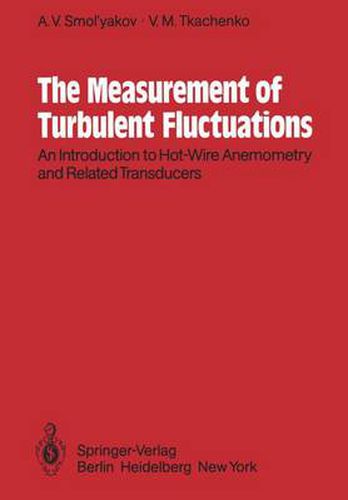Readings Newsletter
Become a Readings Member to make your shopping experience even easier.
Sign in or sign up for free!
You’re not far away from qualifying for FREE standard shipping within Australia
You’ve qualified for FREE standard shipping within Australia
The cart is loading…






This title is printed to order. This book may have been self-published. If so, we cannot guarantee the quality of the content. In the main most books will have gone through the editing process however some may not. We therefore suggest that you be aware of this before ordering this book. If in doubt check either the author or publisher’s details as we are unable to accept any returns unless they are faulty. Please contact us if you have any questions.
Smol'yakov and Tkachenko’s book is a very thorough and detailed survey of the response of hot wires and related trans ducers to a fluctuating flow field. Now that the electronic equipment needed for hot-wire anemometry is so easy to make or cheap to buy, transducer response is the most critical part of the subject - except for the fragility of the sensing element , for which textbooks are no remedy! We hope that this book will be useful to all students and research workers concerned with the theory or practice of these devices or the interpretation of results. Peter Bradshaw Imperial College London v Preface The importance of experimental data and of experimentally established general properties is often underestimated in the study of turbulence … *. The most direct path is to use experimentally established properties as the foundation upon which models explaining these properties can be constructed.
M. D. Millionshchikov Turbulence belongs to a class of physical phenomena that are very frequently encountered in both nature and technology. It is the most common and also the most complicated form of motion of real liquids and gases. It is observed in the oceans, in the atmosphere, and in a very wide range of systems in engineering. The rational design of airplanes, rockets, ships, dams, hydroelectric plant, canals, turbines, ventilators, and many other technological systems must involve the consideration of turbulence.
$9.00 standard shipping within Australia
FREE standard shipping within Australia for orders over $100.00
Express & International shipping calculated at checkout
This title is printed to order. This book may have been self-published. If so, we cannot guarantee the quality of the content. In the main most books will have gone through the editing process however some may not. We therefore suggest that you be aware of this before ordering this book. If in doubt check either the author or publisher’s details as we are unable to accept any returns unless they are faulty. Please contact us if you have any questions.
Smol'yakov and Tkachenko’s book is a very thorough and detailed survey of the response of hot wires and related trans ducers to a fluctuating flow field. Now that the electronic equipment needed for hot-wire anemometry is so easy to make or cheap to buy, transducer response is the most critical part of the subject - except for the fragility of the sensing element , for which textbooks are no remedy! We hope that this book will be useful to all students and research workers concerned with the theory or practice of these devices or the interpretation of results. Peter Bradshaw Imperial College London v Preface The importance of experimental data and of experimentally established general properties is often underestimated in the study of turbulence … *. The most direct path is to use experimentally established properties as the foundation upon which models explaining these properties can be constructed.
M. D. Millionshchikov Turbulence belongs to a class of physical phenomena that are very frequently encountered in both nature and technology. It is the most common and also the most complicated form of motion of real liquids and gases. It is observed in the oceans, in the atmosphere, and in a very wide range of systems in engineering. The rational design of airplanes, rockets, ships, dams, hydroelectric plant, canals, turbines, ventilators, and many other technological systems must involve the consideration of turbulence.